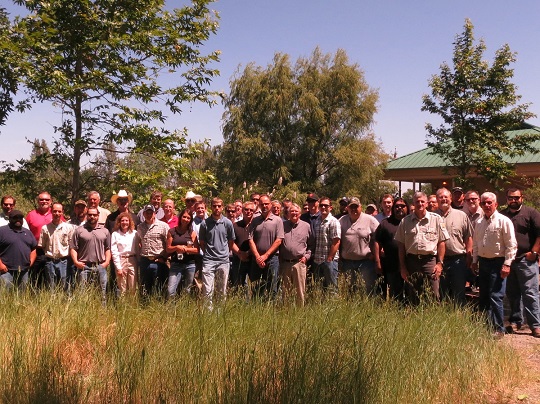Overview
The ring-necked pheasant is a ground nesting gallinaceous bird native to Asia that was introduced and established in California (PDF) and elsewhere in North America during the 1800’s. Pheasants have long been among the most popular game birds for sport hunters and because they share a similar niche with many native grassland songbirds and other upland species, pheasants are an indicator of ecosystem health in California’s grassland and agricultural landscapes.
The ring-neck pheasants flourished in California during the middle part of the 1900’s but profound changes in agricultural and land-use practices in the latter half of the twentieth century have reduced that amount and quality of habitat available to populations of wild birds around the state. Decreases in cereal grain crops and increases in orchards and rice agriculture have contributed to losses in the type of habitat that provides cover for pheasants to nest and raise broods in as well as to escape from predators. “Clean Farming” practices have decreased the amount and distribution of idle habitat (hedgerows, fencerows and unused edges) in California’s Central Valley and other growing regions. In addition, increasing efficiency in water infrastructure, from concrete lined canals to piping water and widespread conversion to lazer-leveling exponentially larger fields, have limited the surface water, moist springtime soils and habitat heterogeneity on which pheasant chicks depend on for survival and insect production during the spring brood rearing period. Managing for quality nesting and escape cover in conjunction with moist springtime soil have been the focus of much of CDFW’s recent efforts to improve conditions for ring-neck pheasant on public lands (Hart et al. 2009 (PDF)). Other factors may also have contributed to declines in the sport harvest of pheasants over the last quarter century and the current state of drought has certainly had an impact on the success of remaining wild pheasant populations around the state.
 April 2015 Pheasant Ecology Workshop Attendees
April 2015 Pheasant Ecology Workshop Attendees
In April of 2015, CDFW in cooperation with Pheasants Forever Inc. hosted a pheasant ecology workshop to examine possible causes of a decline of the state’s pheasant population over the last 25 years. The workshop convened more than 45 state and federal scientists, public and private land managers, and representatives from Ducks Unlimited and the California Waterfowl Association. Participants reviewed research from scientists at the US Geological Survey and heard from pheasant experts from across the nation. Data collected showed that contributing factors to the decline include changes in agricultural practices, growth of forested habitats in historic wetland and grassland environments, climate change and predation from increasing raven populations.
Research
Harvest Results
Hunting